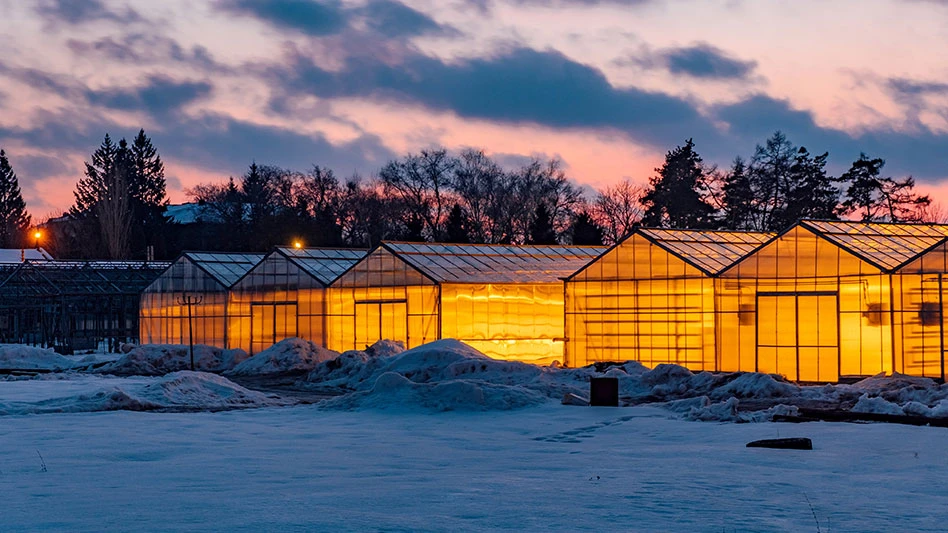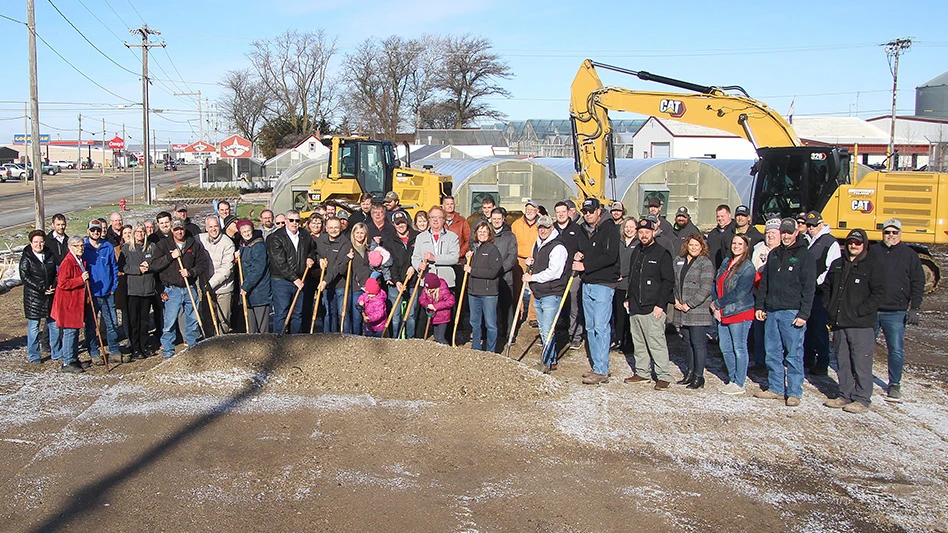
As the climate changes, nature seems to be getting more violent in recent years with increased numbers of hurricanes and record-breaking storms. The International Building Code has revised its wind and snow loading requirements for some areas of the United States.
Damage to greenhouses from storms can include racking of the frame, bending of hoops, broken glass or torn plastic and uplifted foundation posts. Preparation ahead of time can minimize the damage.
Wind force
The wind passing by a greenhouse creates a positive pressure on the windward side and a negative pressure on the leeward side. An 80 mph wind on a 10’ by 100’ sidewall of a gutter-connected greenhouse would have to resist a 16,000 lb force.
- Tighten loose truss and frame connectors.
- Check that cables are tight and rigid braces secure.

Wind uplift
Wind can also create an uplift. An 80-mph wind blowing perpendicular to the side of a 28’ x 100’ hoophouse can create a lifting force of 220 lb/sf of length or 22,000 lbs of uplift on the whole structure.
- Close all openings including vents, louvers and doors. The effective force of the wind is doubled when it is allowed inside the building.
- Increase the inflation pressure slightly on poly-covered houses by opening the blower’s intake valve. This will reduce the rippling effect. Check to see that the plastic is secure.
- Disconnect the arm to the motor on all ventilation intake shutters and tape the shutters closed. Then turn on enough exhaust fans to create a vacuum in the greenhouse. This will pull the plastic tight against the frame.
Snow load
Snow can be light and fluffy with a water equivalent of 12 inches of snow = 1 inch rain. It can also be wet and heavy with 3 inches of snow = 1 inch of rain. Snow with 1 inch rainwater equivalent = 5.2 lb/sf. This amounts to 6.5 tons on a 25’ x 96’ greenhouse.
- Collar ties and post connections should have adequate bolts or screws. This is a weak point in some greenhouse designs with brace bands.
- Clean snow between closely space houses or cut plastic to prevent hoops from being bent.
- In hoop houses, install 2x4 posts under the ridge every 10 feet when heavy snow is predicted.
- Maintain 80° F inside temperature to melt snow and ice. Add temporary heaters if necessary. It takes 250 Btu/hr per square foot of glazing to melt wet snow falling at a rate of 1inch/hour. Turn heat on several hours before the storm begins.
- Energy screens should be retracted to allow heat to the glazing.
Heavy rain
A 1-inch rainfall is 27,150 gallons on an acre of roof
- Clean gutters and downspouts of leaves and debris before the storm.
- Remove obstructions in drainage swales.

Backup power
A reliable standby generator is needed to power heaters, fans, blowers and pumps.
- Have adequate fuel for the duration of the storm.
- Operate once a month.

Explore the September 2023 Issue
Check out more from this issue and find your next story to read.
Latest from Greenhouse Management
- This month's Greenhouse Management magazine is about native plants and sustainability
- The HC Companies, Classic Home & Garden merge as Growscape
- Terra Nova releases new echinacea variety, 'Fringe Festival'
- Eason Horticultural Resources will now officially be known as EHR
- BioWorks receives EPA approval for new biological insecticide for thrips, aphids, whiteflies
- ScottsMiracle-Gro transfers cannabis subsidiary to focus on core lawn and garden business
- Should we start calling natives 'eco-beneficial plants'?
- Ellen Mackenbach-Lakeman appointed new CEO of Dümmen Orange







